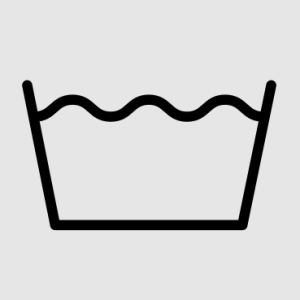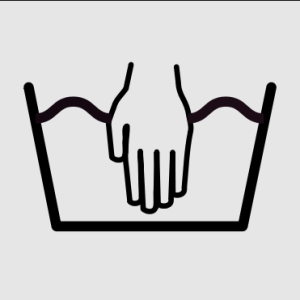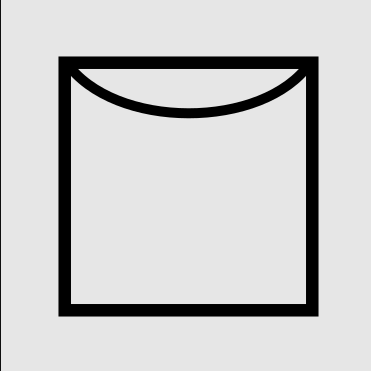What laundry symbols mean and how they help extend the life of your clothing
Posted September 8, 2023 6:08 pm.
Last Updated September 8, 2023 6:35 pm.
Laundry is a top contender for most hated chore for many, but doing it right can go a long way in reducing your carbon footprint and living more sustainably.
Well-cared for clothes last longer, which means you can get more wears from them, keeping them out of landfills where most discarded clothing eventually ends up.
“The average piece of clothing is actually only worn four to five times,” says Linley McConnell, garment expert and director of client experience at Gibson’s Cleaners.
“We actually throw out 90 per cent of our clothes too early, often due to the improper cleaning and care.”
She says caring for garments properly can help increase their longevity and help you buy less in the long run.
“We want to make sure that we can clean and care for things so that we can wear them again and again – especially if they’re sentimental pieces, nostalgic or vintage items. We can really extend their life — whether that’s upcycling in the future or we decide to repurpose that item for whatever reason,” she says.
“If you do invest in your pieces – you shop vintage, you shop high quality … and then take care of them properly, I think you can build a wardrobe that’s really personalized, but also that’s really thinking about the environment.”
To that end, she says it is important to learn how to read and understand various laundry symbols.
“Manufacturers are responsible for putting a garment care label inside a clothing item when they make it and a lot of the time these symbols are overwhelming, confusing,” she says.
Deciphering the more than 50 symbols currently in use can be daunting, and more are being added regularly as cleaning methods evolve.
Decoding laundry symbols
Laundry symbols tell you how to wash, dry, treat, iron and dry clean your clothes and commonly come in five shapes: square, circle, triangle, an icon that looks like an iron and another that looks like a wash tub.
Common among all the symbols:
- A cross means do not do that particular action
- One dot means low heat, two dots mean medium heat, three dots mean high heat
Washing
Washing symbols look like a wash tub and mean the garment can be washed normally in a washing machine. A hand in the symbol denotes that the item should be hand washed.


Drying
Drying symbols are denoted with a square and an empty square means the garment should be naturally dried, on a clothing rack for example.
A flat horizontal line within the square means “lay flat to dry,” whereas a curved line from the top two corners means the item should be hung from a clothesline with clothespins.
Two diagonal lines in the top left of the square denote drying in the share whereas three vertical lines within the square symbolize drip drying.
A square with a circle in it means the item can be safely tumble dried in a home dryer and the acceptable temperature will be denoted with dots.



Treating with bleach
Bleaching symbols are denoted with a triangle, with an empty triangle symbolizing that the item is safe to bleach.
The letters “CL” within the triangle mean that chlorine bleach may be used.
Two diagonal lines within the triangle denote that non-chlorine bleach may be used when needed.



Ironing
The ironing symbol looks like a line drawing of an iron and the acceptable temperature will be denoted with dots.

Dry cleaning
Dry cleaning is symbolized by a circle. Any letters inside the circle inform the dry cleaner of what solvent or chemical is safe to use on the garment.

Your laundry questions answered
CityNews asked viewers and readers to send in their questions about garment care and laundry.
Q: How much detergent is really necessary?
McConnell: I think probably if I was in the detergent business, I would just say follow the instructions on the bottle. But I do think less is more. I don’t think we need to put an entire cap full. It depends on load size — if you are really packing that machine, you are going to use more detergent. But if you’re keeping your loads mid-size, I think half the amount is totally fine.
Q: Which fabrics should never go in the dryer?
McConnell: We want to avoid wools, silks. Suedes and leathers shouldn’t even be washed. They should be taken to a professional. Down items should only ever be dried on low heat – they should never be in a dryer for too long with too much heat.
Q: Do we need fabric softener in every load?
McConnell: Fabric softener is really a personal choice – some people love how it makes their clothes smell and feel. However, avoid using fabric softener on moisture-wicking fabrics or items like towels, down coats, swimsuits, and athletic gear as it can damage the fabric and make items less absorbent.
Q: Is it better to steam or iron your clothes?
McConnell: Choosing between steam finishing and ironing is fabric-dependent. Opt for ironing for cottons and linens, and use your steamer for delicates like silk. When in doubt use a steamer as there’s a lesser risk of damaging a garment.
Q: Does DIY detergent work?
McConnell: When it comes down to it, laundry is quite scientific, so I would recommend staying away from an at-home detergent. There’s a risk of damaging your clothes and, maybe more importantly, your washing machine. These days, there are so many options for detergents and you can get specific on what you’re looking for whether it’s unscented, eco-friendly or another preference, there should be something out there for you.








